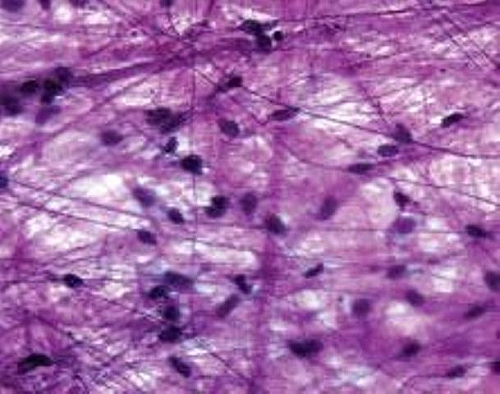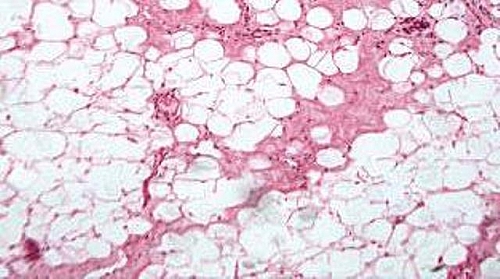Table of Contents
What is Connective Tissue?
Connective is a type of tissue that fills the gap between other tissues or organs and helps to hold them together and provide support.
Connective tissue is a type of tissue that provides support, cushion, strength, and elasticity to other tissues or organs of the body. Some specialized connective tissues such as blood help transport nutrients, excretory products and facilitate the exchange of gases (carbon dioxide and oxygen mainly) across different tissues while some cells of connective tissue help to protect the body against infections and germs. Connective tissues do not solely bind other tissues together as they are involved in many other functions in the body depending on the type of the connective tissue.
Functions of connective tissue
- Connective provides structural support to other types of tissues or organs
- They provide nutritional support by supplying blood to surrounding epithelial tissues such as in areolar connective tissue
- The white blood cells, mast cells, and plasma cells of connective tissues serve to control infections and play a role in the inflammatory process.
Location
- Loose connective tissue is found around blood vessels
- Tendons and ligaments are components of the musculoskeletal system
- Mucoid connective tissue surrounds blood vessels in the umbilical cord (Wharton’s jelly)
- Reticular connective tissue is found in some lymphoid organs such as lymph nodes
- Adipose tissue is found under the skin in the subcutaneous layer of the skin
- Blood is found in the arteries and veins
- Cartilage tissue forms parts of the nose and ears
- Fascia cover muscles
Classification
Connective tissues are classified based on their differences in composition and amount of the cells, fibers, and ground substance. These differences allow the classification of connective tissues into different types and subtypes therefore, descriptive names or classifications used for the various types of connective tissue denote either a major component of the tissue or a structural characteristic of the tissue.
Types of Connective Tissues
- Connective Tissue Proper (General Connective Tissue)
- Specialized Connective Tissue
These two types of connective tissues have subtypes which are listed below.
General connective tissue
There are 2 types of connective tissue proper, which are the loose and dense connective tissues.
Types of general connective tissue
- Loose connective tissue
- Dense connective tissue
Loose Connective tissue
This is composed of loosely arranged fibers and abundant ground substance; it is well vascularized and provides blood supply to nearby epithelial tissues.
Dense connective tissue
This is composed of densely packed fibers that are mostly collagen and have less ground substance with sparse fibrocytes. This type of connective tissue provides strength and support.
Subtypes of Dense connective tissue
- Dense regular connective tissue fibers are regularly arranged
- Dense irregular connective tissue fibers are irregularly arranged
Types of Specialized connective tissues
- Bone connective tissue is the most rigid connective tissue that provides support and structure to the body as well as helps in the production of blood
- Blood connective tissue is a fluid form of connective tissue and transports cells and nutrients to other tissues and organs.
- Cartilage connective tissue provides structure and support such as in the nose or ears
- Adipose connective tissue
- Tendons this connective tissue joins bones to bones
- Fascia covers the muscles
- Ligaments this connective tissue joins muscles to bones
- Mesenchyme is an embryonic type of connective tissue.
Components
- Ground substance (Fluid matrix)
- Connective tissue fibers
- Connective tissue cells
Ground Substance
The matrix or the ground substance of the connective is a viscous and gel-like substance containing much water content. Its main components are proteoglycans, glycosaminoglycans, and multi-adhesive glycoproteins such as laminin, fibronectin, and others. The ground substance functions as a cushion and also allows for the diffusion of gases and nutrients to the tissue involved.
Cells of the Connective Tissue
- Fibroblasts produce the fibers in connective tissues
- Mast cells release histamine during hypersensitivity reactions
- Macrophages (Histiocytes) Phagocytose pathogens and debris thereby helping to control infections
- Plasma cells involved in the production of antibodies
- Leucocytes (White blood cells) include eosinophils, basophils, neutrophils, monocytes, and lymphocytes
- Adipocytes (fat cells) found abundantly in adipose connective tissue
Connective Tissue Fibers
- Collagen fibers
- Reticular fibers
- Elastic fibers
Collagen fibers
The collagen fibers are the most numerous of fibers in connective tissues. They are thick and long rope-like strands composed mostly of type 1 collagen. The collagen fibers of connective tissues provide support, strength, and flexibility to the other tissues or organs.
Reticular Fibers
These fibers are composed of type III fibrillar collagen and are very thin and short. They serve as a meshwork upon which other tissues rest.
Elastic Fibers
These long strands of fibers are thin, branched, and hair-like; they are composed of elastin and fibrillin proteins. Their purpose is to provide elasticity to tissues and organs helping them to extend and recoil.





